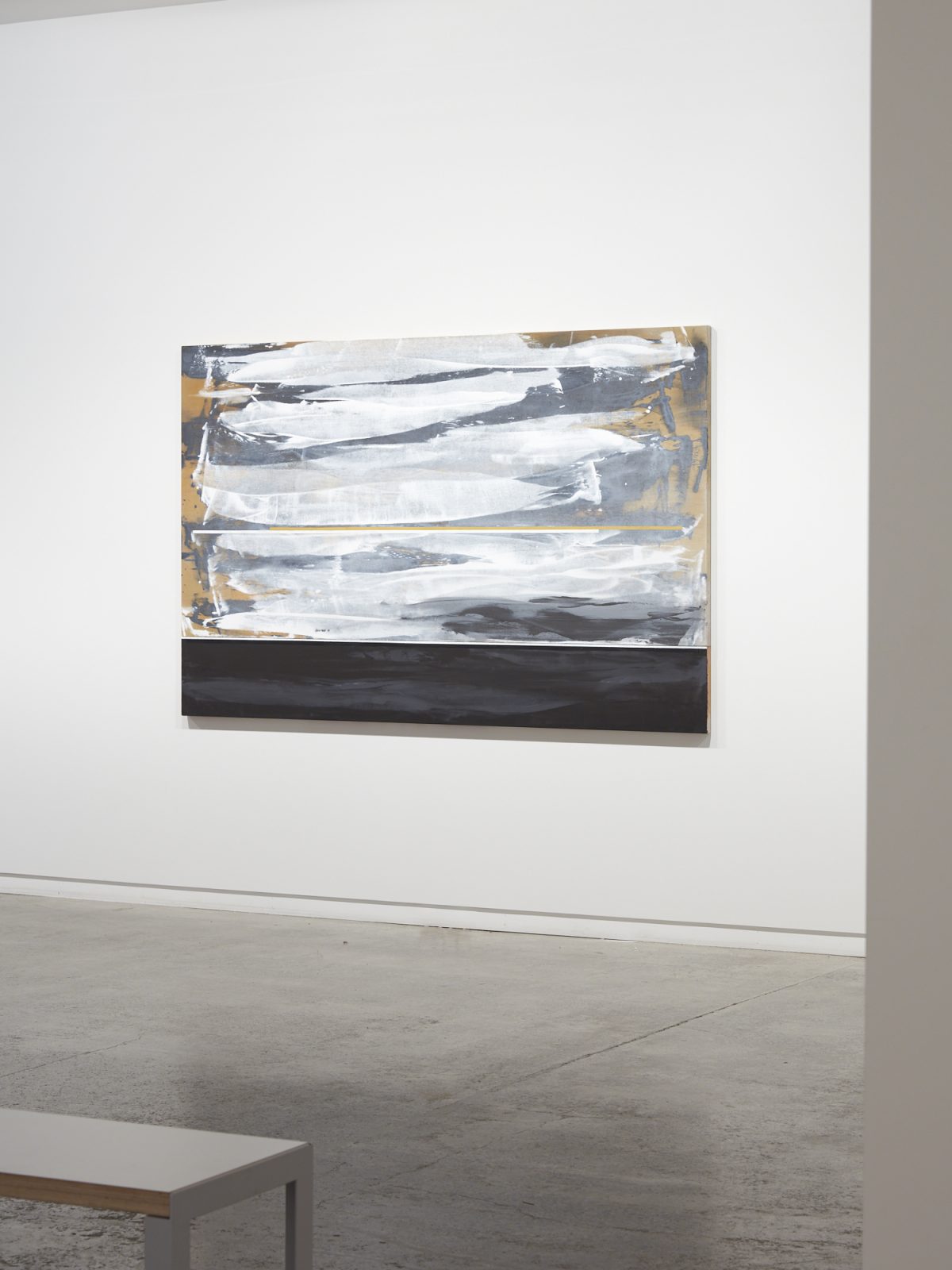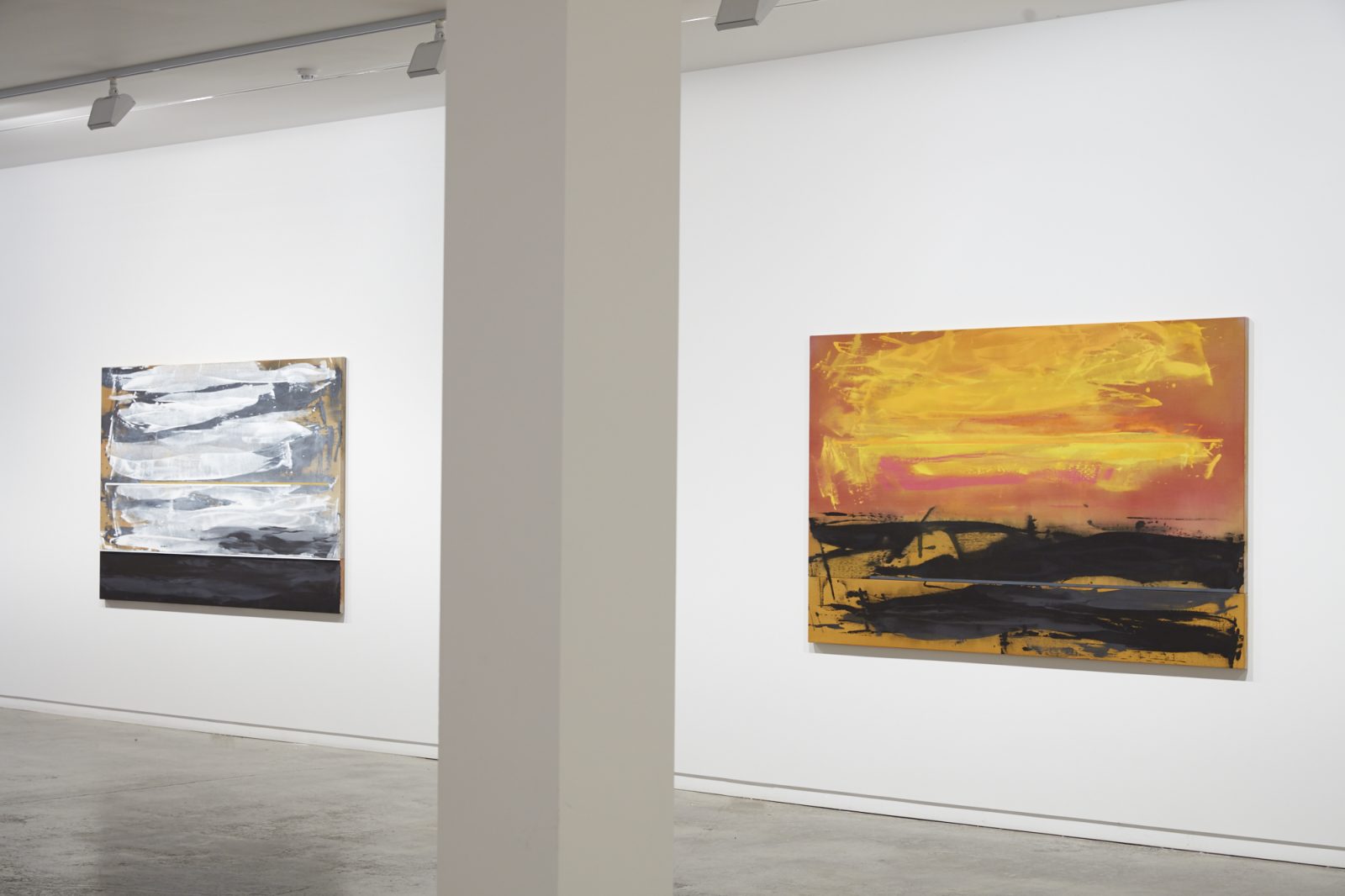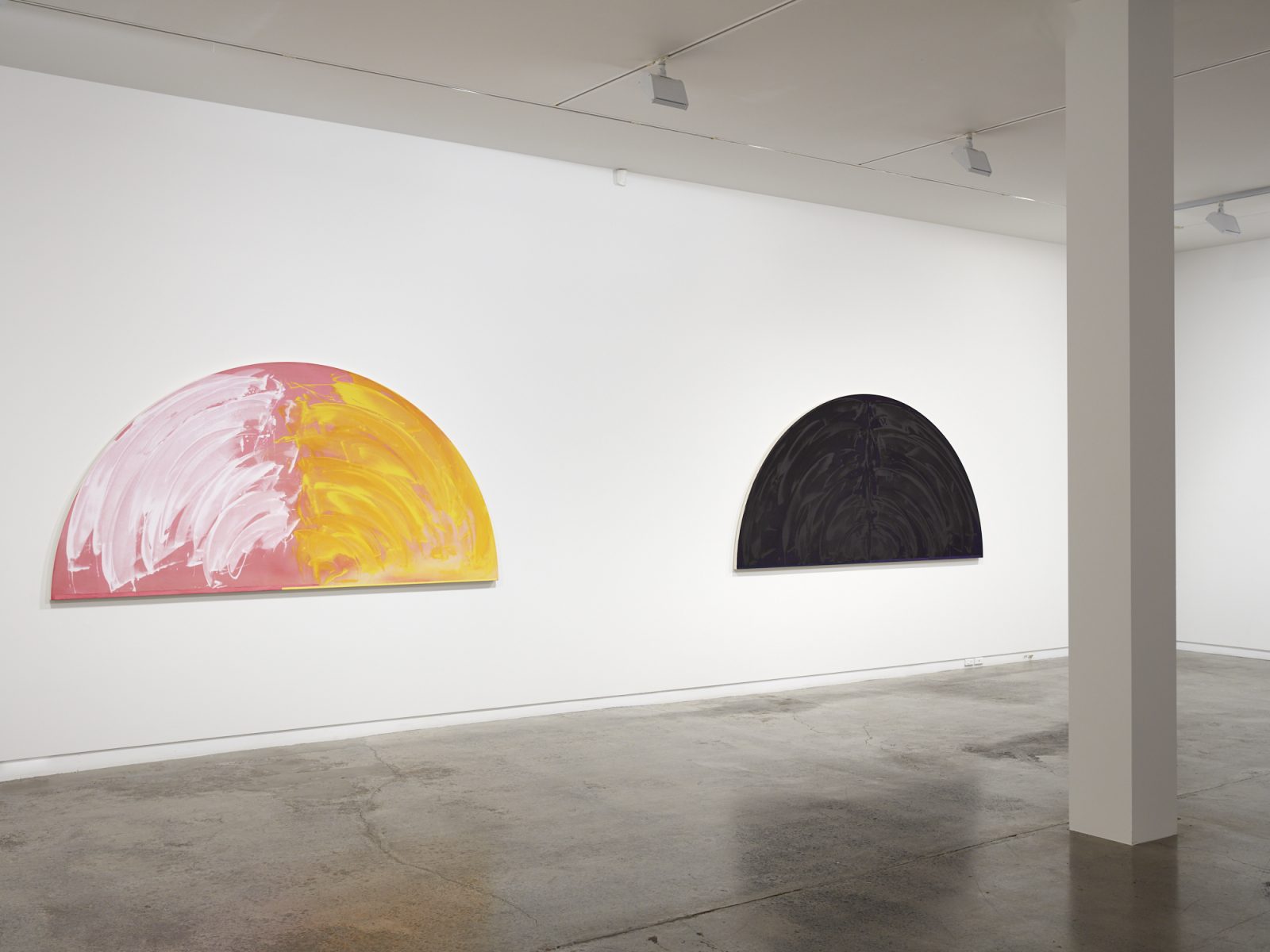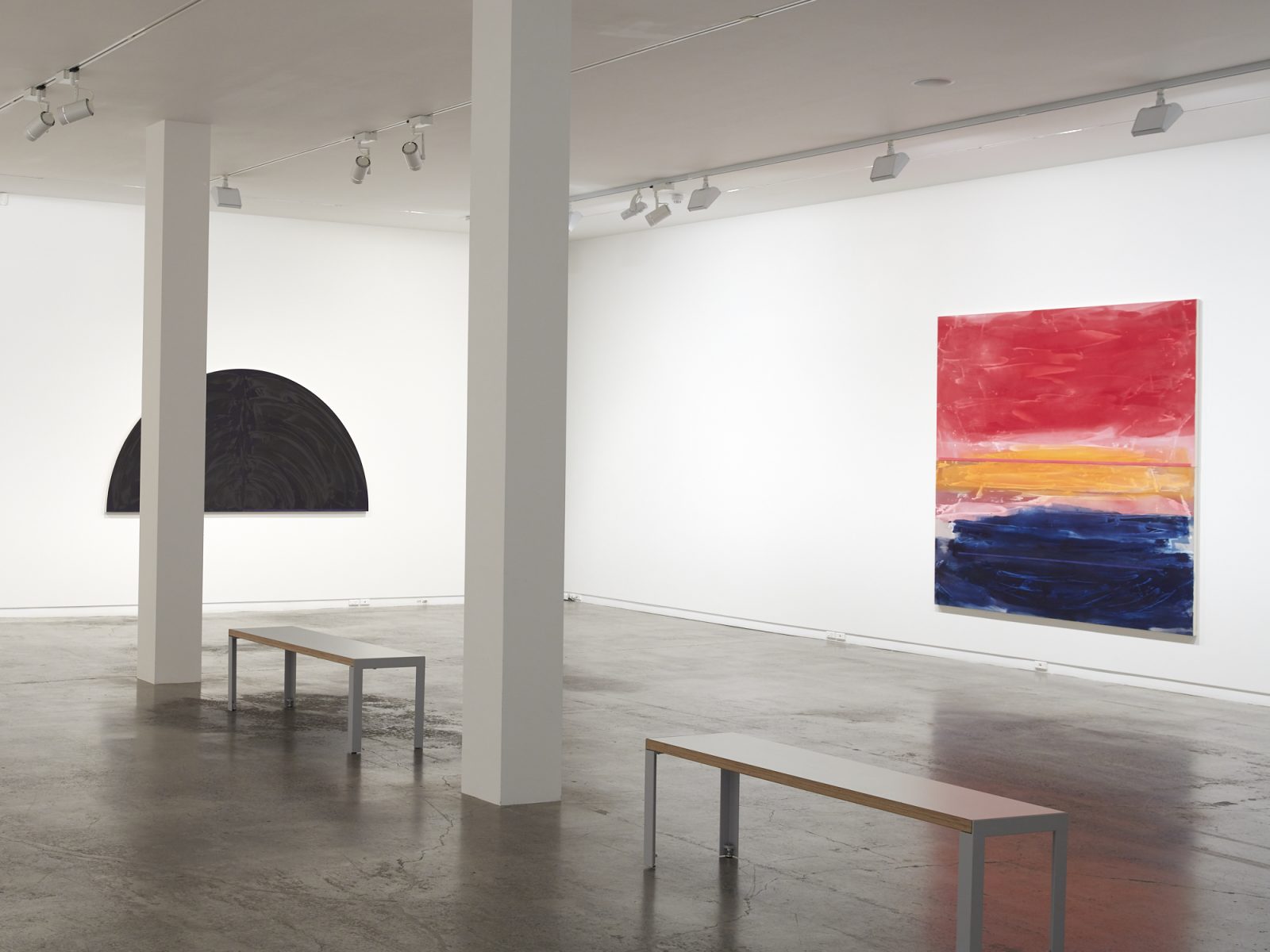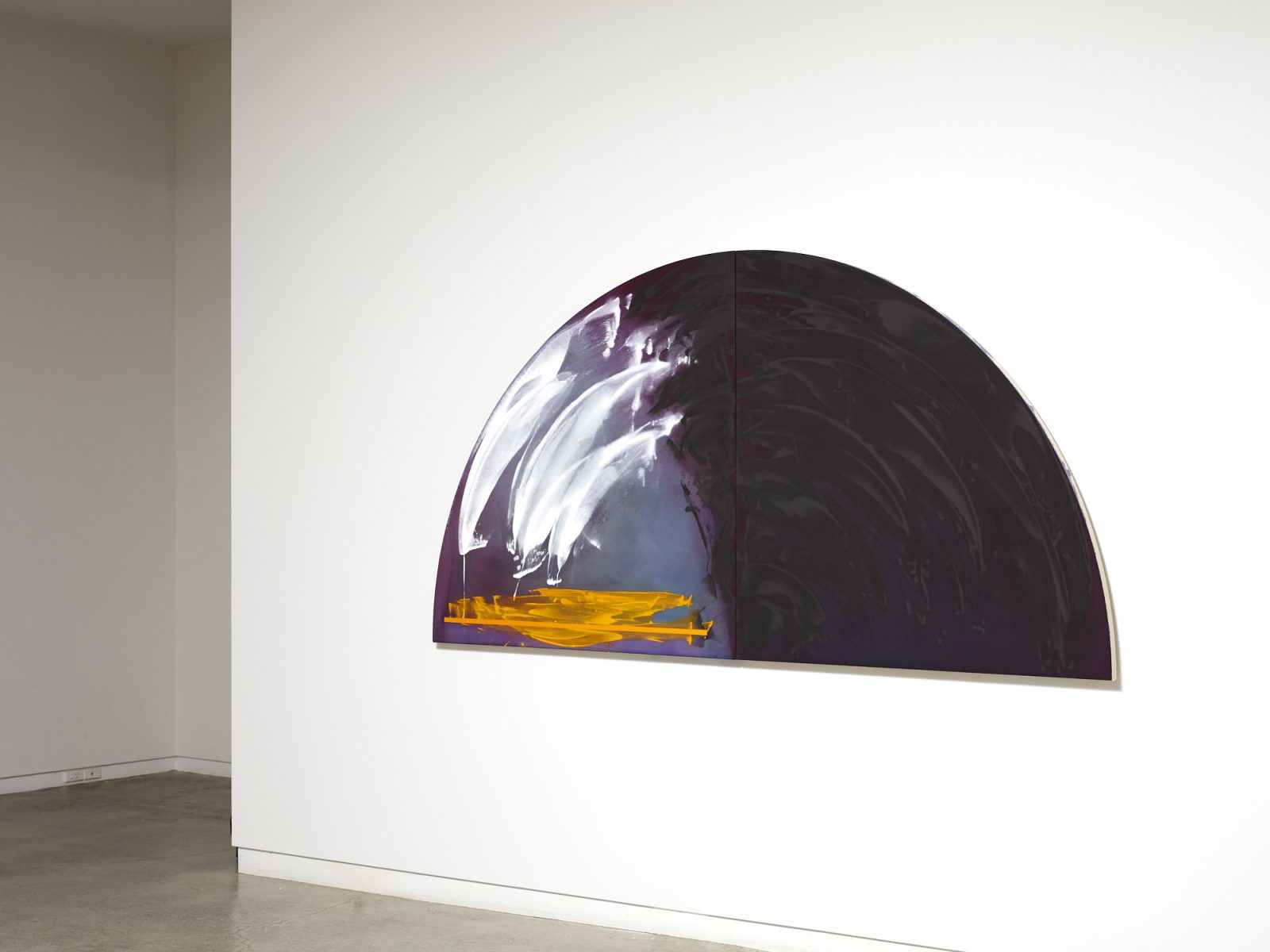Gretchen Albrecht
between gesture and geometry
12 April - 25 May 2019
Light, all encompassing, leads the viewer. Carving an arc across the pulse of days, the world of experience takes anchor within the softly shifting states of emanation and shadow, atmosphere and attribute. Fluctuating rhythms of light and darkness, with their indifferent complicity, perform as guiding partners in the cyclic passage of human knowledge. The work of Gretchen Albrecht begins in this confluence, in a mode she has defined as an ‘impure’ form of abstraction. Connotative rather than located purely within the realm of the mind, Albrecht’s work operates in a fertile twilight terrain.
Each of Albrecht’s canvases records a gestural meeting point between the artist’s embodied knowledge of a concrete, illuminated world and her studied inquiries into the more nebulous realm of insight, metaphor, abstraction and myth. Drawing from the world in order to summon understanding from its many rhythms and textures, Albrecht’s practice can be firmly situated within the trajectories of international post-war abstraction. Nevertheless, Albrecht speaks directly to Aotearoa, articulating the themes, moods and nuance of these islands, and returning to her perennial source of inspiration time and again.
The recent paintings brought together in Between gesture and geometry station a series of meditations on the twining of light and knowledge observed from this geographical vantage point. The three Hemisphere paintings – Vigils (the night watch), Jumping into the Light and Prime ‘the sun has risen’ – are part of a larger series of work that dwell on radiant states within a single daily cycle. Titled in resonance with three of the canonical prayer hours (the night Vigils, Lauds said at dawn and then Prime), each painting imparts the tone of the corresponding passage of moments. Although Compline (which is recited at nightfall) is also an hour that falls within this series, the paintings Nearing the Compline Hour, Crossing the Sand-Bar and Far, Far Away deal more directly with notions of illumination and space and the generative turbulence of elemental forces.
As the title of the exhibition suggests, gesture and geometry are the two poles between which Albrecht’s practice is situated and might be considered the equivalent of elemental forces invoked in her studio. Following the motion of the turning earth and moving in mind through the insights of human history, these have become the language through which Albrecht locates all others.
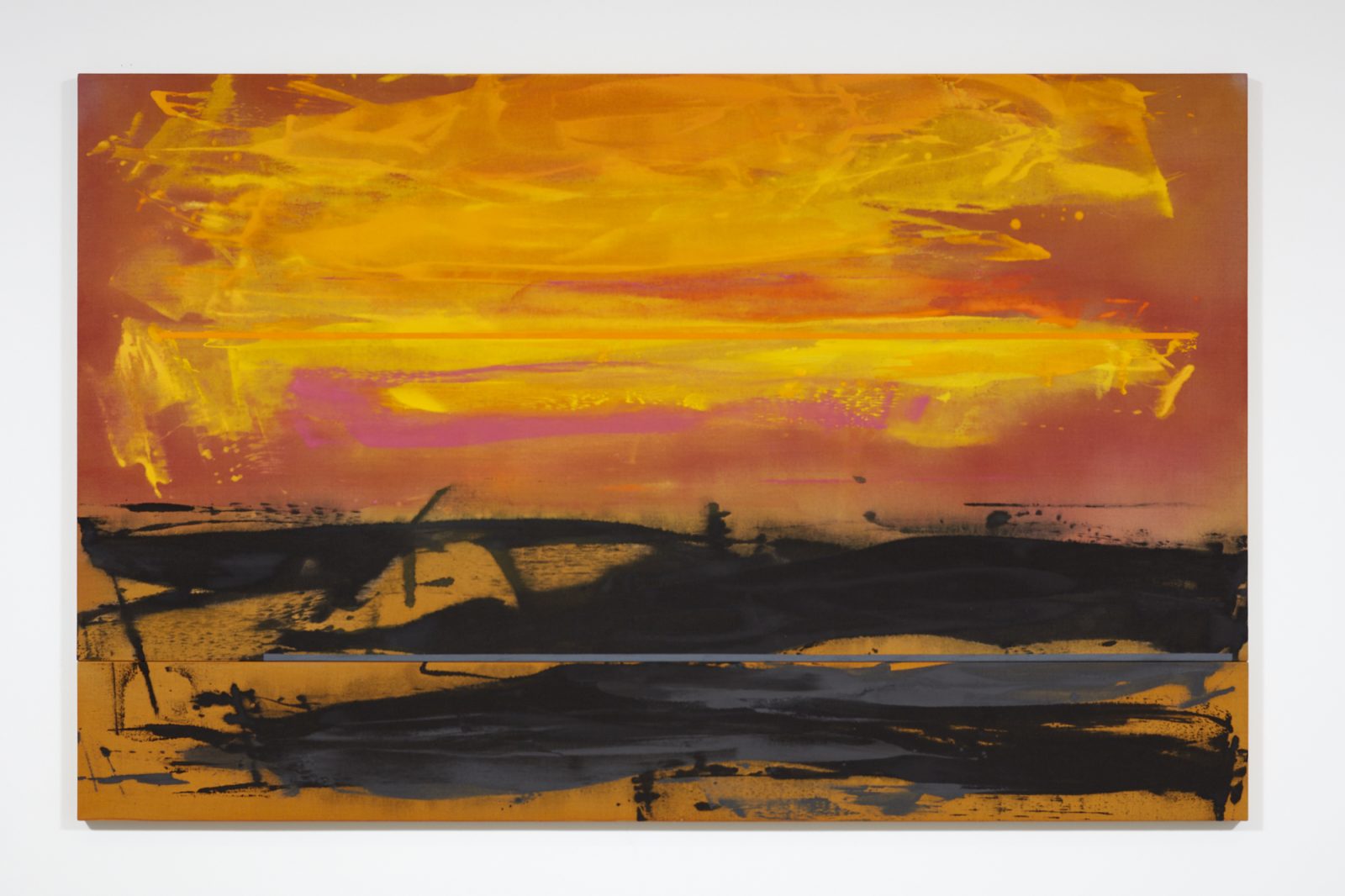
Acrylic & Oil on Belgian Linen
1410 x 2210 mm
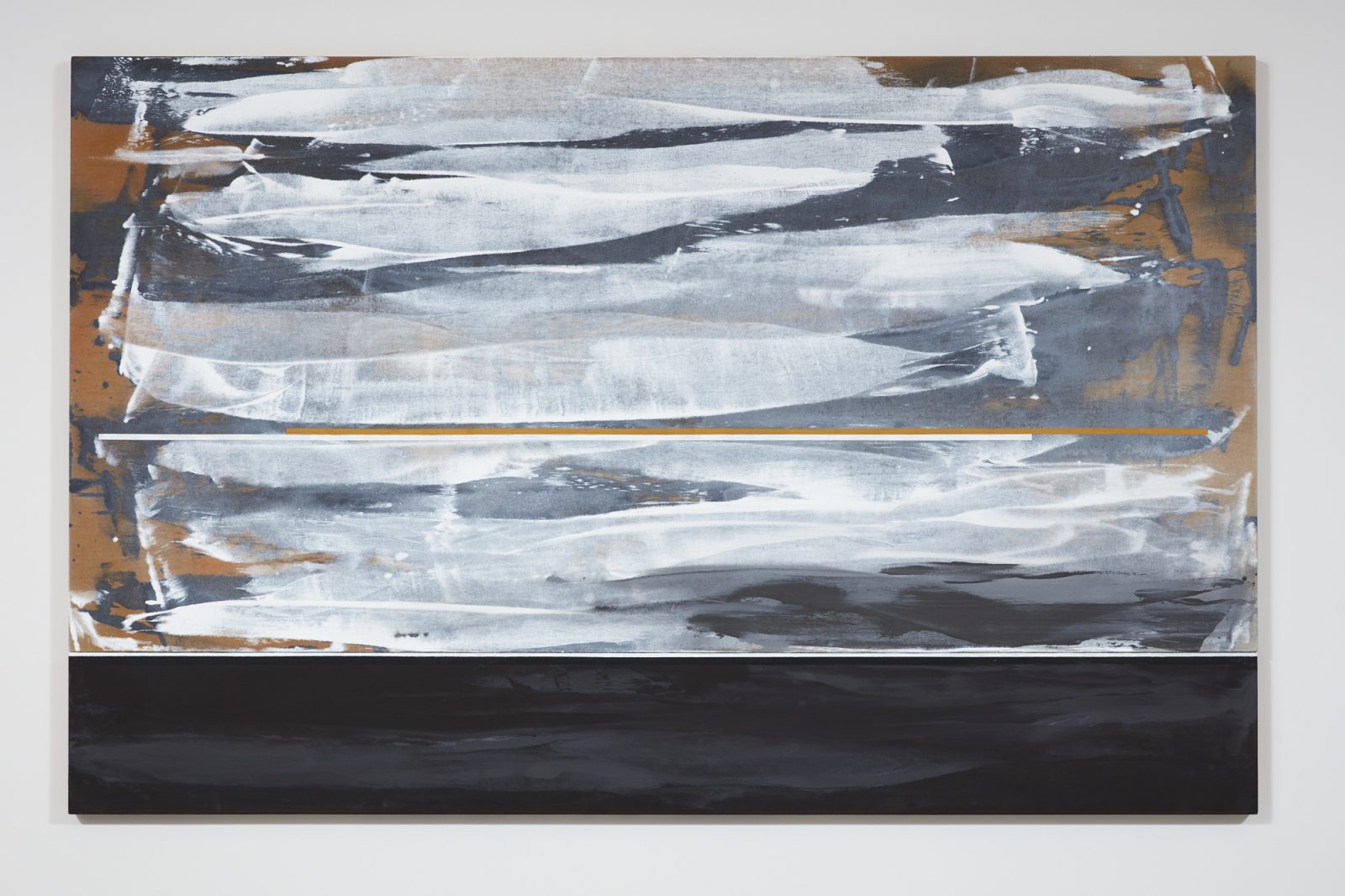
Acrylic on Belgian linen
1410 x 2210 mm
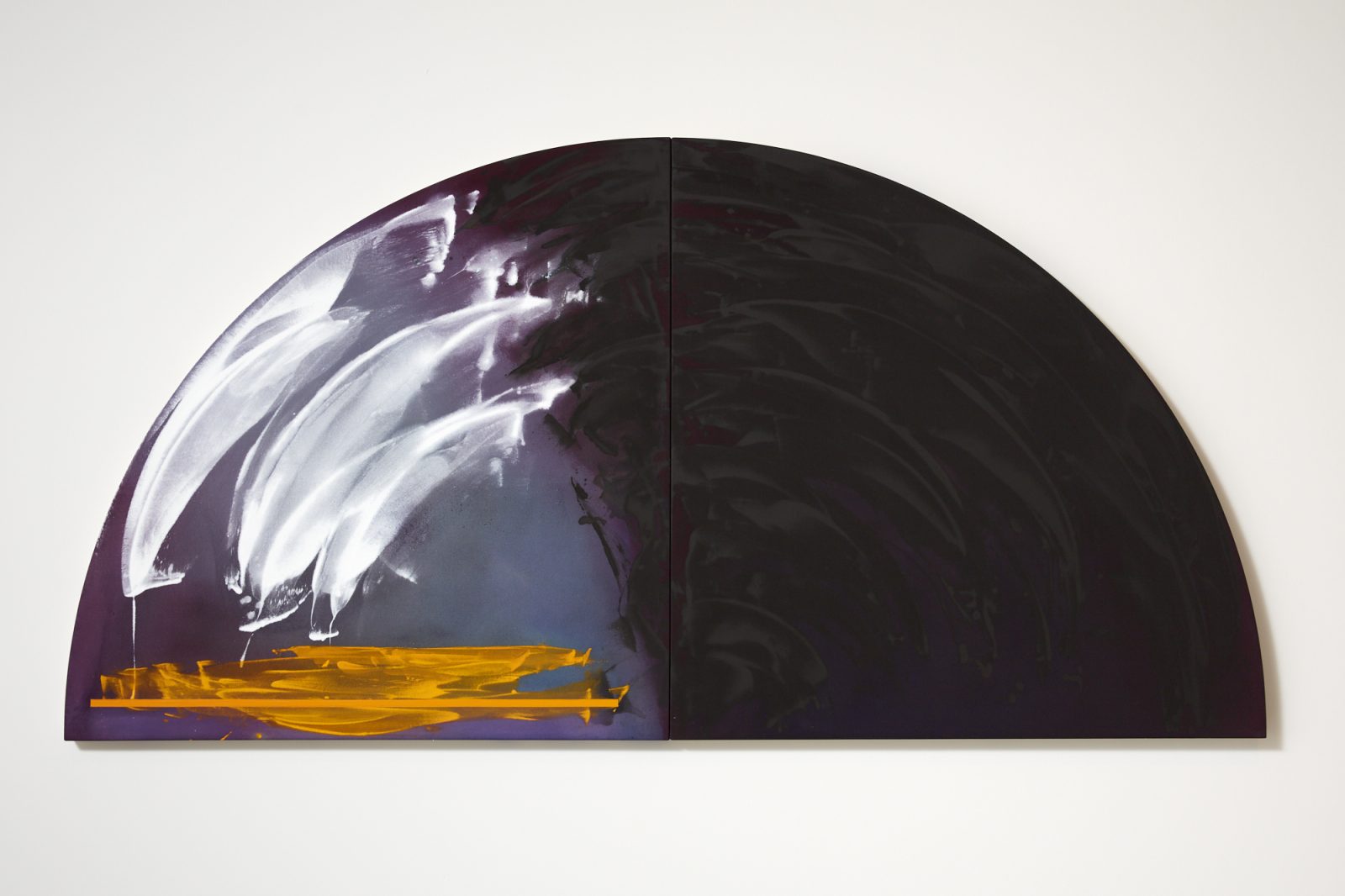
Acrylic on canvas
1225 x 2500 mm
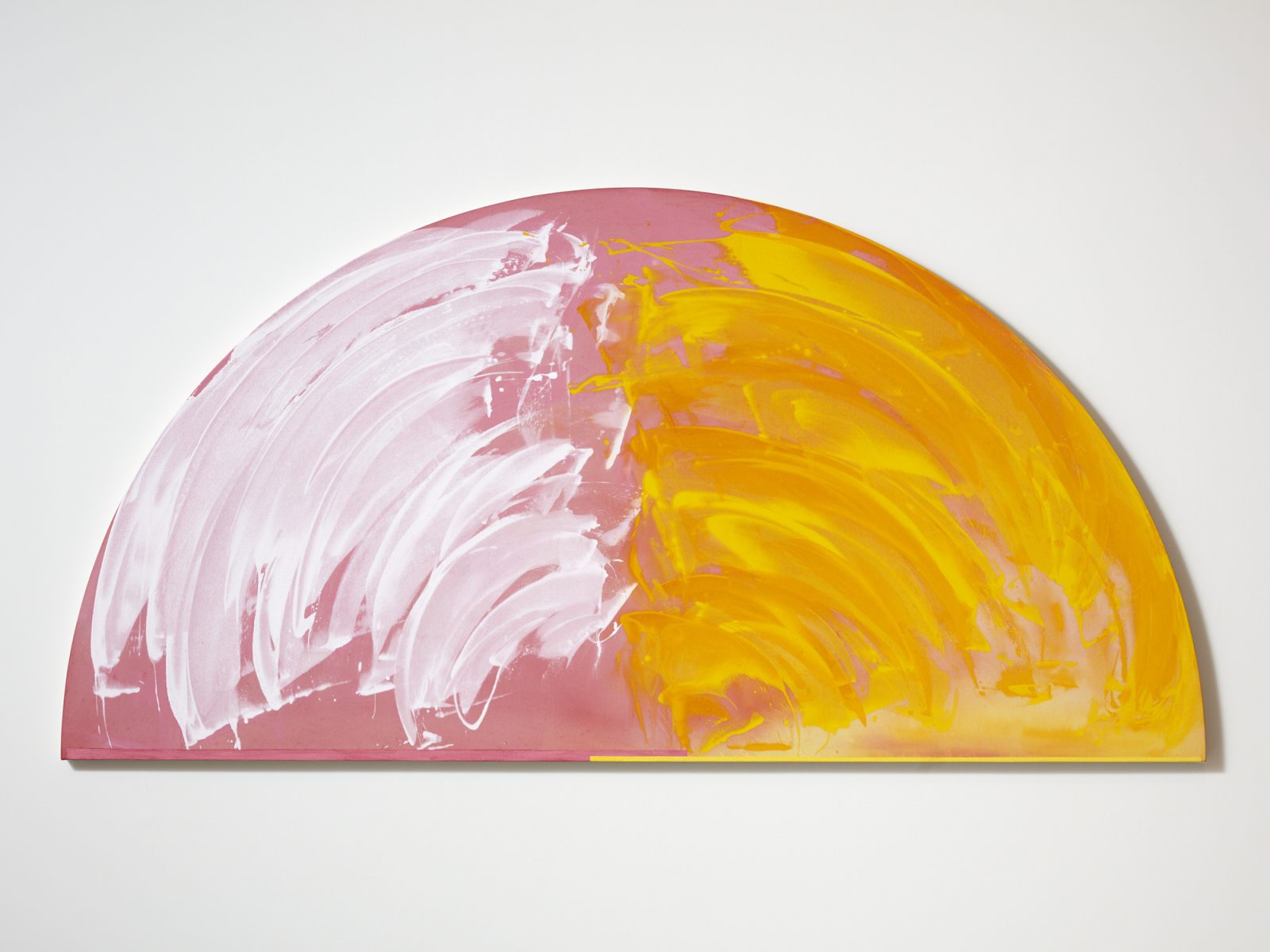
Acrylic & oil on Canvas
1225 x 2500 mm
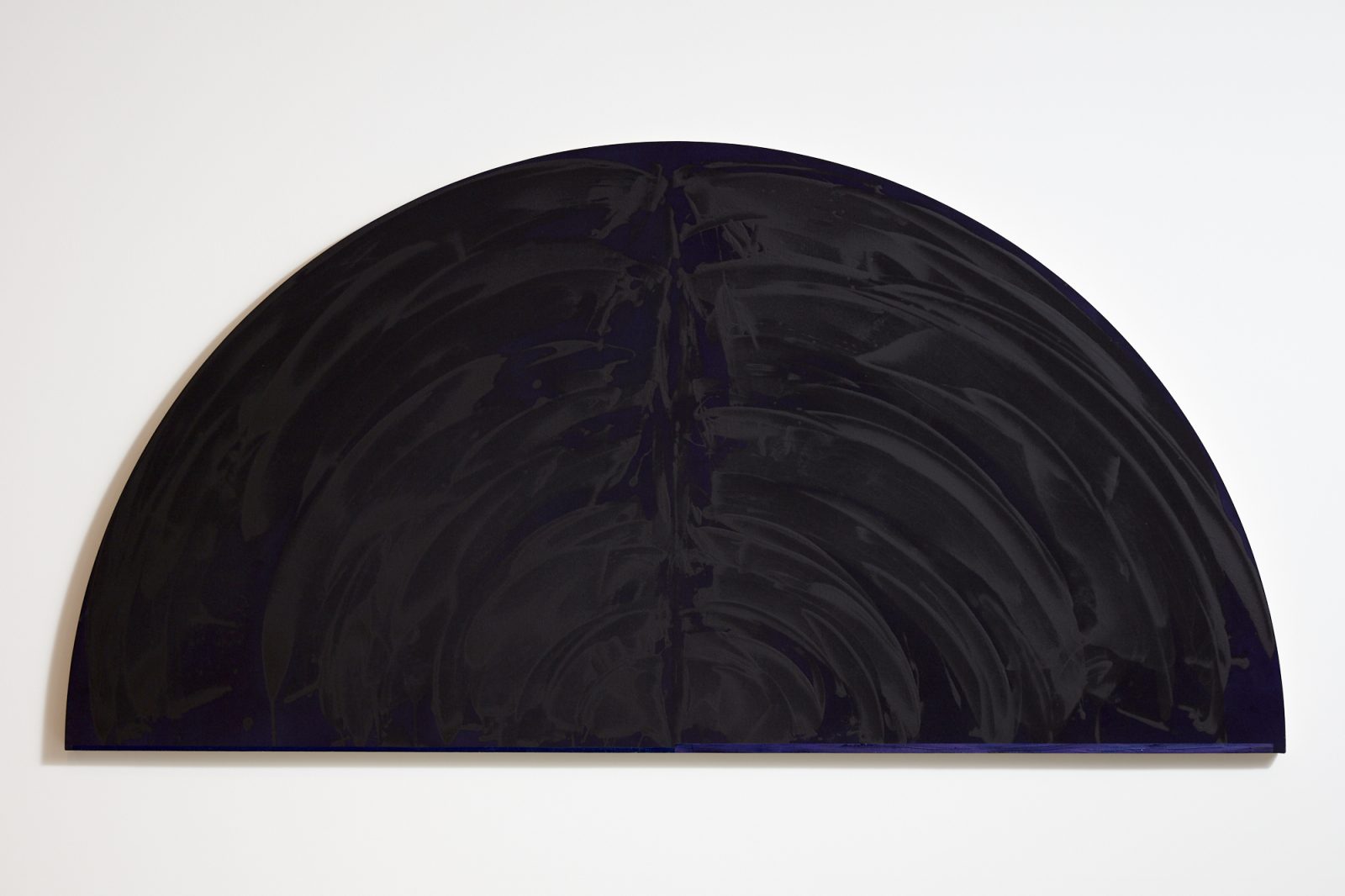
Acrylic on canvas
1250 x 2500 mm
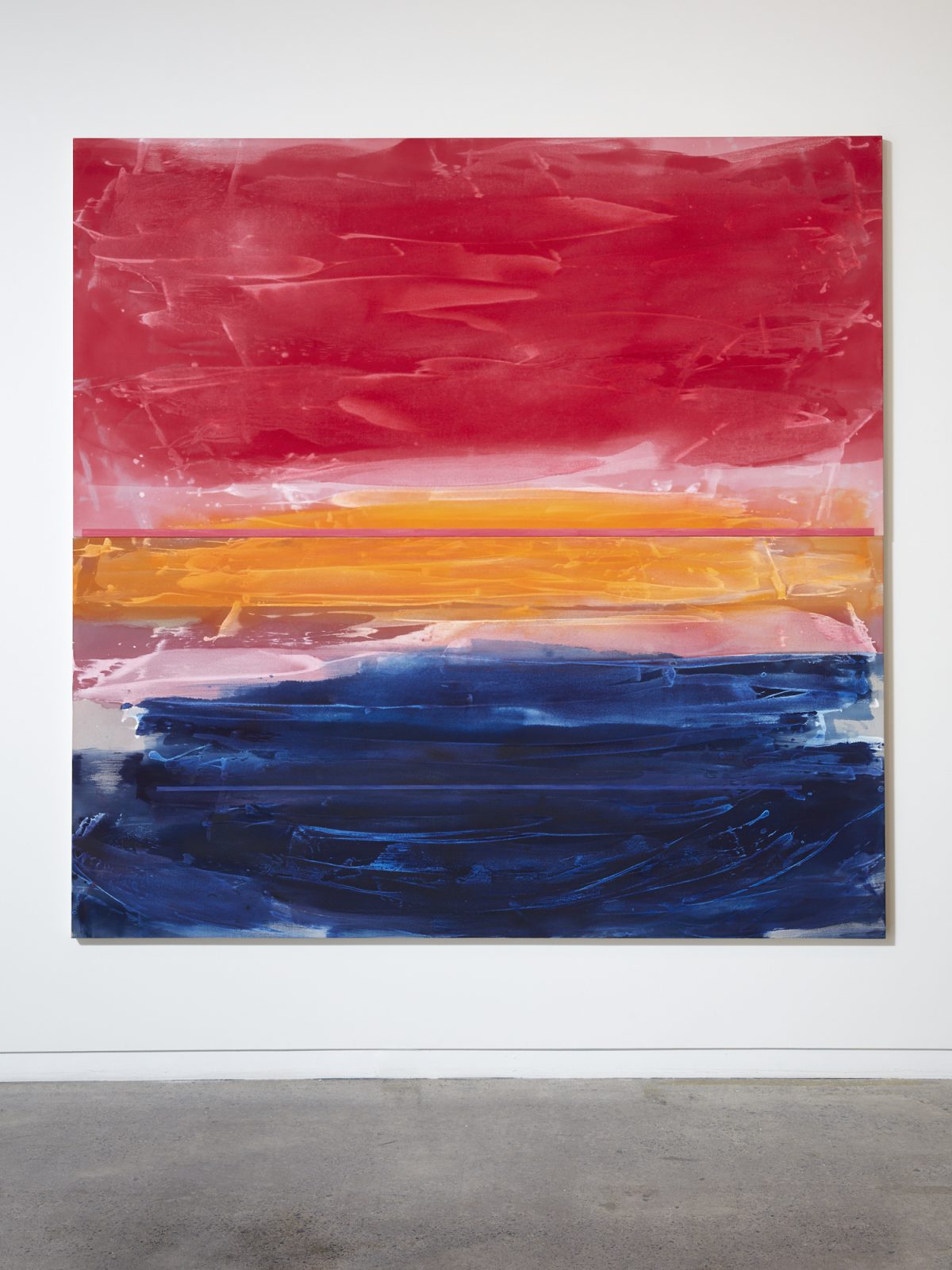
acrylic & oil on canvas
2100 x 2130 mm
